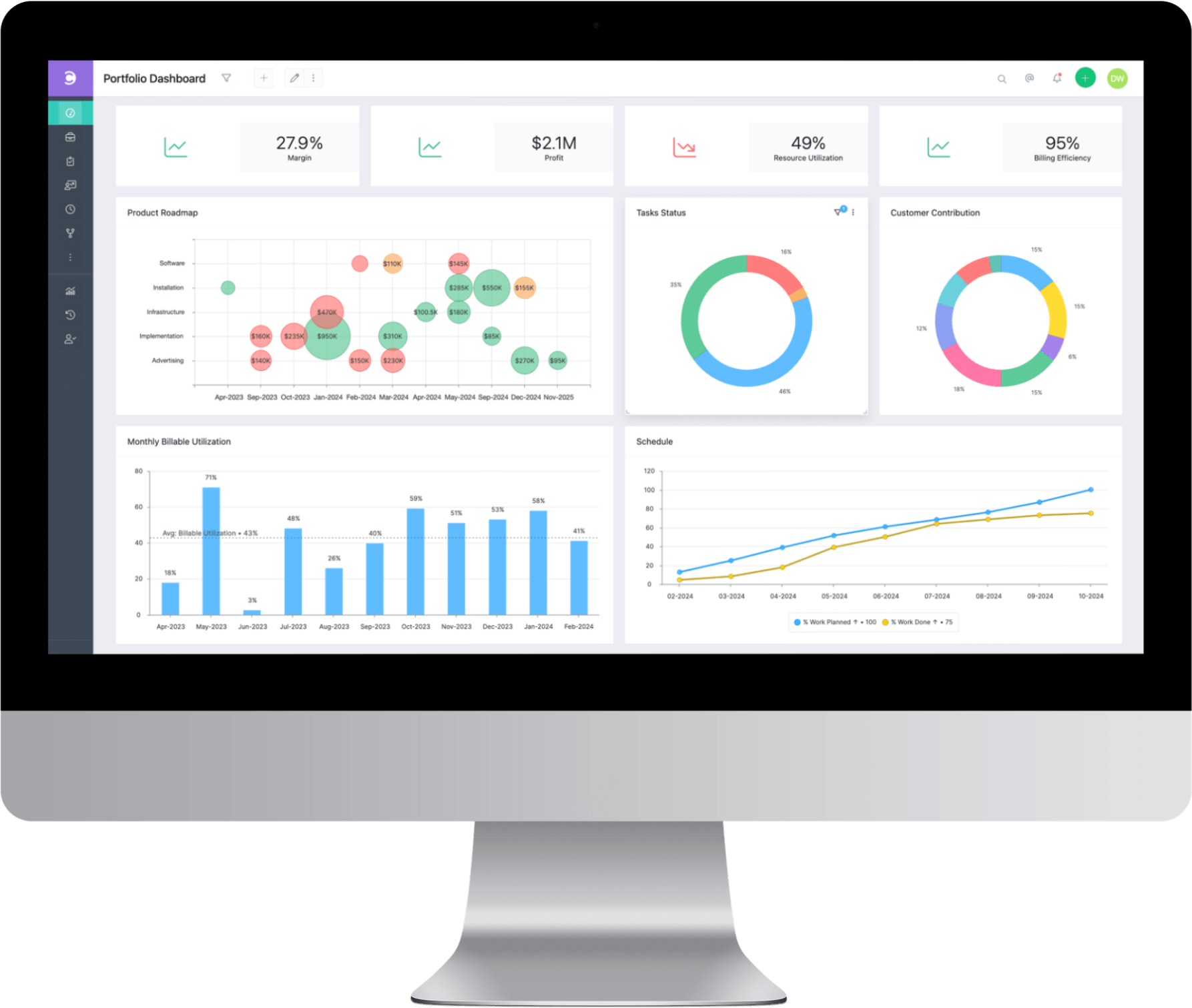What is Project Management?
Project management is the structured process of planning, organizing, executing, and monitoring tasks to achieve specific goals within a set timeframe and budget. It involves defining project objectives, allocating resources, managing risks, and ensuring timely delivery while maintaining quality standards.
In today’s fast-paced business world, project management is essential for organizations to streamline workflows, enhance efficiency, and deliver successful outcomes. Whether handling small internal projects or large enterprise initiatives, adopting the right project management strategies and tools can significantly impact productivity and business growth.

The Core Components of Project Management
1. Project Planning
Effective project management starts with a detailed plan that outlines the scope, timeline, budget, and deliverables. This phase involves setting clear objectives, defining project milestones, and identifying potential risks.
2. Task and Resource Management
Proper allocation of resources—whether human, financial, or material—is crucial for project success. Project managers ensure that team members have the necessary skills and tools to complete assigned tasks efficiently.
3. Time Management and Scheduling
Time management plays a vital role in keeping projects on track. Tools like Gantt charts and Kanban boards help visualize progress, set deadlines, and prevent delays.
4. Collaboration and Communication
Seamless communication is the backbone of any successful project. Project management involves setting up clear channels for team collaboration, whether through meetings, emails, or software platforms that support file sharing, messaging, and real-time updates.
5. Risk Management
Every project comes with uncertainties. Project managers proactively identify potential risks, assess their impact, and implement contingency plans to minimize disruptions.
6. Project Tracking and Reporting
Monitoring project progress is essential to ensure alignment with goals. Project tracking tools provide insights through key performance indicators (KPIs), progress reports, and real-time dashboards, helping managers make data-driven decisions.
Project Management Methodologies
Different projects require different approaches. The most widely used project management methodologies include:
1. Waterfall Methodology
A traditional linear approach where each project phase (planning, execution, testing, deployment) follows a sequential order. Suitable for projects with well-defined requirements.
2. Agile Methodology
A flexible, iterative approach that prioritizes collaboration, adaptability, and customer feedback. Agile is commonly used in software development and dynamic business environments.
3. Scrum Framework
An extension of Agile, Scrum focuses on short, iterative cycles called sprints. It involves daily stand-up meetings and promotes continuous improvement through team collaboration.
4. Kanban Method
A visual project management approach that helps teams track tasks in real-time using a board with columns (To-Do, In Progress, Completed).
5. Hybrid Approach
A combination of different methodologies, tailored to meet specific project needs. This approach offers flexibility by integrating structured planning with Agile’s adaptability.
Benefits of Effective Project Management
✔ Improved Productivity – A clear structure helps teams stay focused, reducing wasted time and effort.
✔ Cost Efficiency – Budget tracking ensures financial resources are allocated effectively, preventing overspending.
✔ Better Collaboration – Centralized communication tools keep all stakeholders informed and aligned.
✔ Higher Project Success Rates – Systematic planning and execution increase the likelihood of project completion within deadlines.
✔ Scalability and Growth – Effective project management allows businesses to scale operations while maintaining quality and efficiency.
The Role of Project Management Software
To streamline workflows and improve efficiency, businesses rely on project management software like Celoxis. Such tools automate planning, tracking, and collaboration, making it easier to manage multiple projects simultaneously.
Key Features of Celoxis:
- Interactive Gantt Charts for visualizing project timelines
- Task and Resource Management to optimize workload distribution
- Advanced Reporting & Analytics for data-driven decision-making
- Seamless Team Collaboration with file sharing and communication tools
- Budget and Expense Tracking to keep projects financially sound
By integrating project management software, organizations can enhance productivity, improve team coordination, and ensure timely project completion.
Conclusion
Project management is essential for businesses aiming to deliver successful outcomes. Whether you follow Agile, Waterfall, or a hybrid approach, having a solid project management strategy—and the right tools—can drive efficiency and innovation. Investing in robust project management software like Celoxis can transform how your organization plans, executes, and monitors projects, leading to better performance and growth.